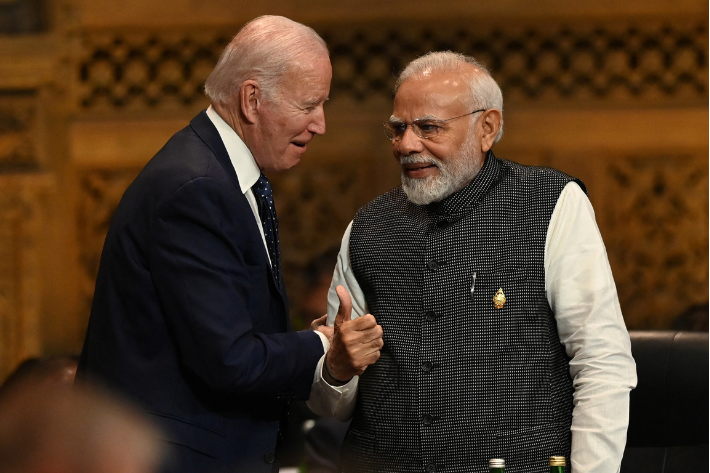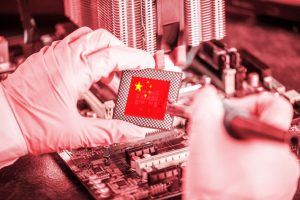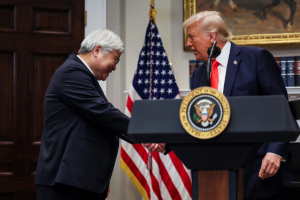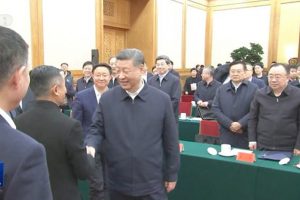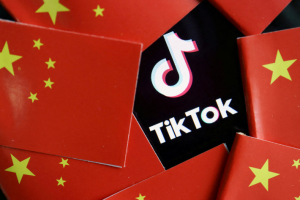India and the United States engaged in a series of meetings this week to bolster a partnership that will help the countries compete against China on semiconductors, artificial intelligence and military equipment.
On Tuesday, India’s national security adviser Ajit Doval, and his US counterpart, Jake Sullivan, met with senior officials from both countries at the White House to launch the US-India Initiative on Critical and Emerging Technologies.
“The larger challenge posed by China – its economic practices, its aggressive military moves, its efforts to dominate the industries of the future and to control the supply chains of the future – have had a profound impact on the thinking in Delhi,” Sullivan said.
Also on AF: India Eyes Tariffs, Import Curbs to Tackle China Trade Gap
Top executives from from various US businesses like defence supplier Lockheed Martin and chipmaker Micron attended the meetings, The New York Times reported.
Doval is also set to meet Secretary of State Anthony Blinken during his three-day visit to Washington DC, which ends on Wednesday.
“President Biden really believes that no successful and enduring effort to address any of the major challenges in the world today … is going to be effective without a close US-India partnership at its heart,” a senior administration official told The New York Times.
Washington hopes to deploy more Western mobile phone networks in the Indian subcontinent to counter China’s Huawei Technologies. It also aims to welcome more Indian computer chip specialists to the US and encourage companies from both countries to collaborate on military equipment such as artillery systems.
The White House faces an uphill battle on each front, however. The US imposes restrictions on military technology transfer and visas for immigrant workers. India’s longstanding dependence on Moscow for military hardware also poses a challenge for the two countries.
Chips, AI battlegrounds
The two countries signed an agreement to foster a research partnership between Indian science agencies and the US National Science Foundation.
It is aimed at expanding coordination in artificial intelligence, quantum technologies and advanced wireless tech “to build a robust innovation ecosystem between our countries”, the White House said.
India’s space programme will also work with NASA on human space flight opportunities and other projects, the Indian statement said.
India and the US also agreed to set up a task force between the India Electronics Semiconductor Association (IESA) and the US Semiconductor Industry Association (SIA) to promote the development of chip ecosystems.
“India is already a major hub for semiconductor research, chip design and equipment engineering, but its future potential is even greater,” SIA President and CEO John Neuffer said, according to a report by The Economic Times.
The task force will aim to build “resilient semiconductor supply chains” and support “the development of a semiconductor design, manufacturing and fabrication ecosystem in India”, according to the White House statement.
India’s Russia dependance
New Delhi has frustrated Washington by participating in military exercises with Russia and increasing purchases of the country’s crude oil, a key source of funding for Russia’s war in Ukraine.
Washington has held its tongue, however, nudging the country on Russia while condoning India’s more hawkish stance on China. Under Secretary of State for Political Affairs, Victoria Nuland, said last week the US “has to help India find alternatives” to Russian arms.
On Monday, Sullivan and Doval participated in a Chamber of Commerce event with corporate leaders from Lockheed Martin Corp, Adani Enterprises and Applied Materials Inc.
Although India is part of the Biden administration’s signature Asian engagement project, the Indo-Pacific Economic Framework (IPEF), it has opted against joining the IPEF trade pillar negotiations.
The initiative also includes a joint effort on space and high-performance quantum computing.
General Electric, meanwhile, is asking the US government for permission to produce jet engines with India that would power aircraft operated and produced by India, according to the White House, which says a review is underway.
New Delhi said that the US government would review General Electric’s application expeditiously and that the two countries would focus on joint production of “key items of mutual interest” in defence.
- Reuters, with additional editing by Vishakha Saxena
Also read:
80,000 Laid-Off Indian IT Workers Scramble to Stay in US – Mint
Apple ‘to Raise India Production to 25%’ in Retreat From China
US Top Buyer of India’s Russian Crude Petroleum Goods – Mint
India Free to Buy All the Russian Oil it Wants, Yellen Says




